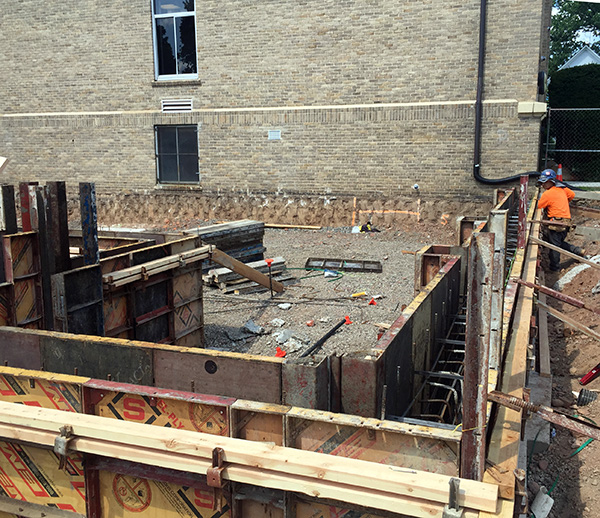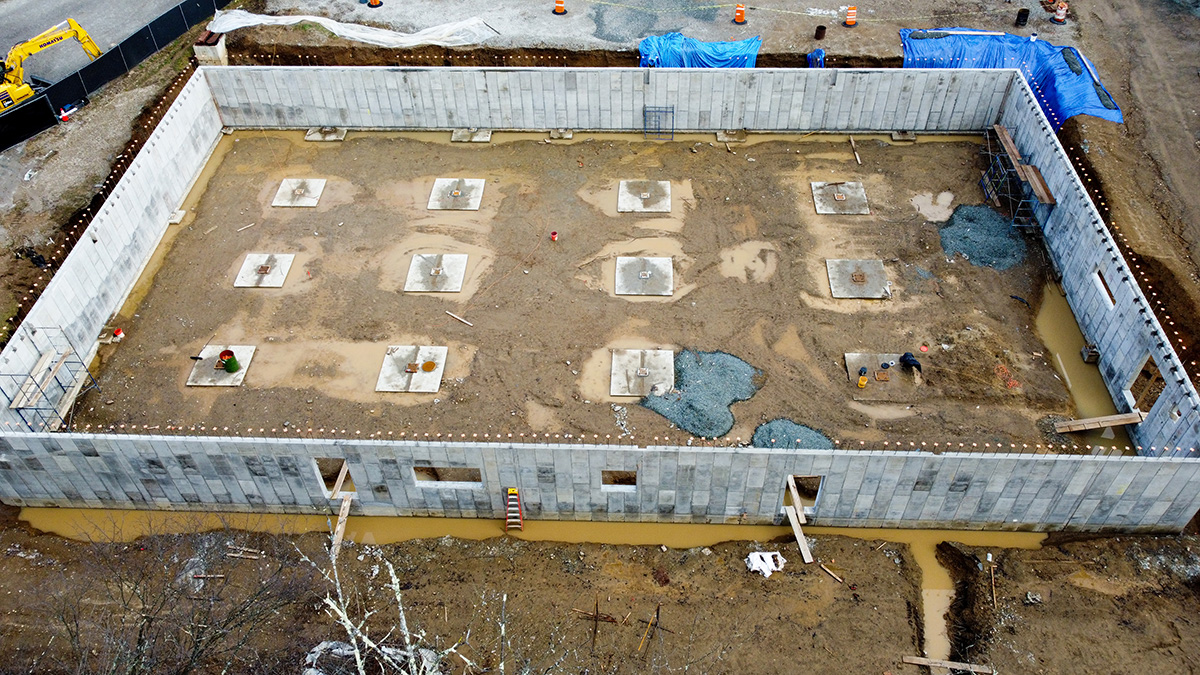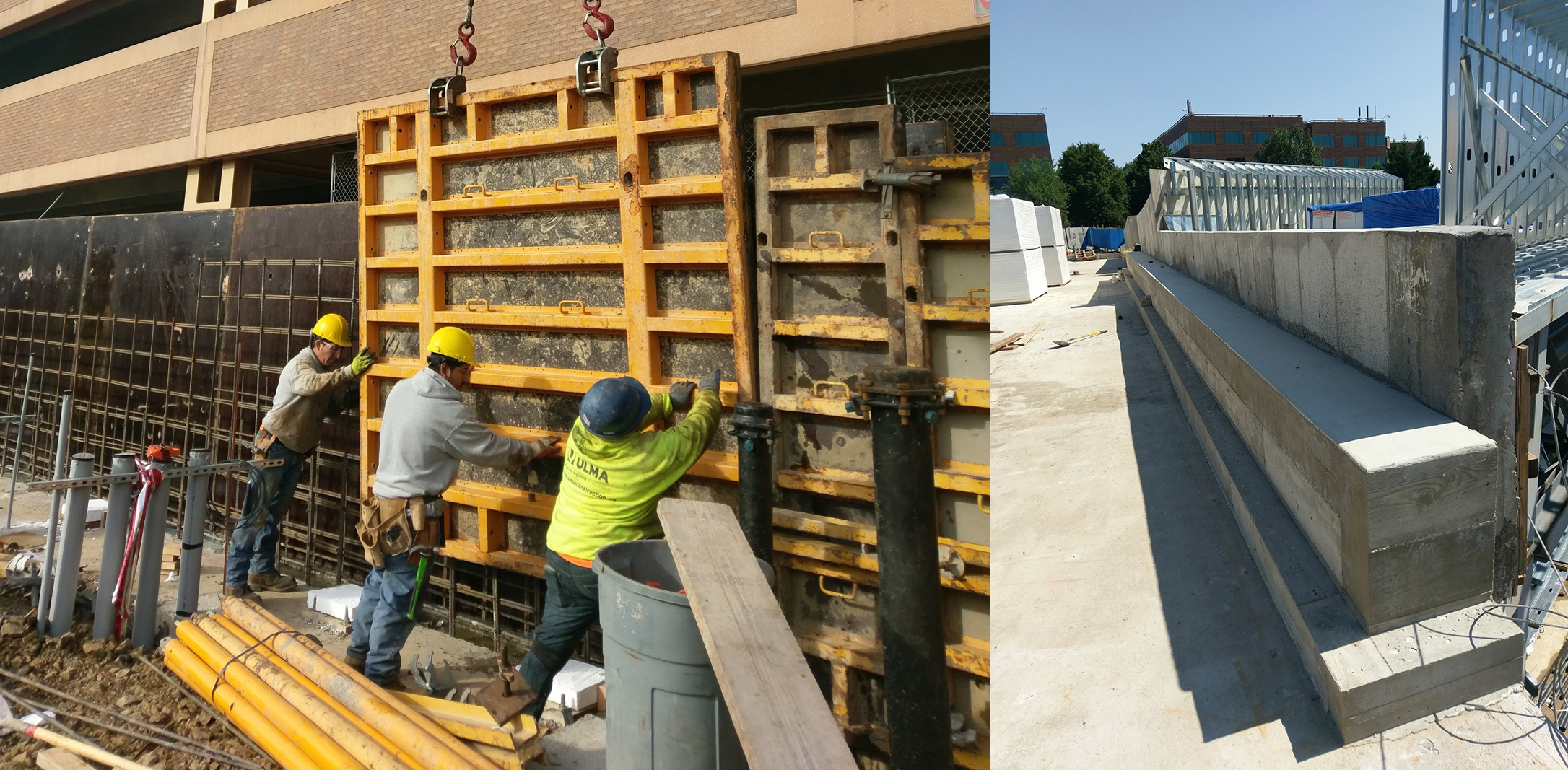Poured concrete foundations constitute the integral structural base of modern edifices, contributing substantial rigidity, load-bearing capacity, and longevity to the overarching construction. Renowned for their robustness, these foundations are a staple in both residential and commercial construction. They are meticulously engineered to mitigate potential vulnerabilities, ensuring the support of subsequent construction phases and the eventual occupants.
The Poured Concrete Wall Construction Process Explained

The intricate process for erecting poured concrete foundations begins with site excavation and progresses through the strategic placement of footings and formwork. This standard sequence involves expert commercial concrete contractors who apply their specialized knowledge to ensure structural integrity.
The steps include laying rebar-reinforced footings, erecting formwork, placing steel supports, and pouring high-grade concrete, followed by a curing period that varies based on environmental conditions.
Site preparation commences with the deployment of heavy machinery to excavate the designated area, precisely defining the structural blueprint’s perimeter. The excavation depth is determined by the architectural requirement for subterranean levels or utility conduits.
Subsequently, engineered footings, either cast in situ or precast, are situated within the excavation. These elongated, robust slabs, typically reinforced with steel rebar, function as the foundational support for the superstructure’s load-bearing elements.
Custom-designed formworks are then installed, delineating the spatial geometry of the future concrete walls. These forms are securely braced to withstand the hydrostatic pressure during concrete placement and to maintain structural fidelity during the curing phase.
Within these forms, a matrix of steel reinforcement is strategically arranged to fortify the concrete against tensile and shear stresses, optimizing the wall’s compressive strength capabilities.
High-performance concrete, selected for its suitability to the project’s specifications, is then meticulously poured into the forms, enveloping the reinforcement and forming a monolithic wall atop the footings.
The concrete undergoes a controlled curing process, after which the forms are stripped away, revealing the load-bearing walls. The duration of curing is contingent upon the mix design and prevailing environmental conditions, ranging from 3 to 10 days.
Following these steps, the integrity of the walls is verified before proceeding to the subsequent construction stage of flooring installation.

What Are the Major Benefits of Poured Concrete Walls?
Poured wall foundations typically surpass slabs or block constructions in continuity, reducing potential for leakage and structural weakness. The efficiency of poured walls often leads to cost and time savings. Contractors with expertise in poured concrete, like TG Basile, recommend this technique for its reliability and adaptability to complex geometries unachievable with block construction.

Is a Poured Wall Foundation Better Than Slabs or Blocks?
Poured wall foundations typically surpass slabs or block constructions in continuity, reducing potential for leakage and structural weakness. The efficiency of poured walls often leads to cost and time savings. Contractors with expertise in poured concrete, like TG Basile, recommend this technique for its reliability and adaptability to complex geometries unachievable with block construction.